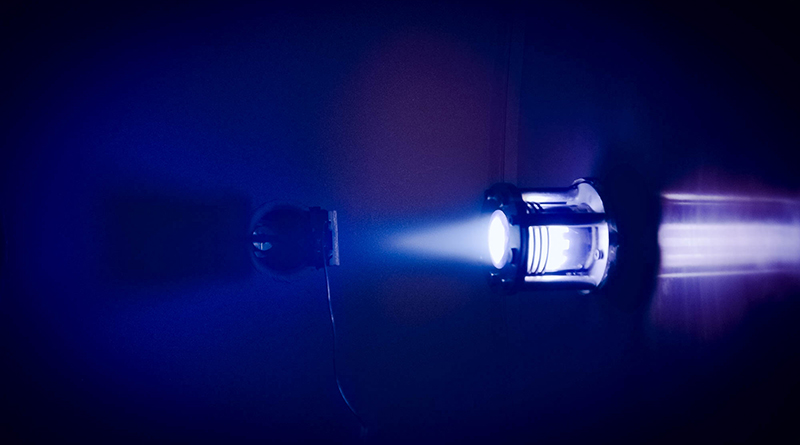Recent years have seen a variety of new players enter the space industry. One domain ripe for disruption is the satellite propulsion market, with technological breakthroughs championed by startups such as ThrustMe. At Presans, we take a professional interest in disruption in all shapes and forms, so we took the opportunity to sit down and have a chat with ThrustMe co-founder and CEO Ane Aanesland.
What’s your take on the ongoing space revolution?
I think we’re at the start of a significant wave of disruption in the satellite industry. The miniaturization of satellites has opened up and democratized the access to space related activities that before were only accessible to large corporations and government agencies. Small satellites only 1 to 10 % of the size of conventional ones are becoming interesting tools for imaging and communication and the possibility to use them in mega constellations of tens to hundreds of satellites are the future of Big Data, the Internet and global intelligence related to economic, environmental and humanitarian activities. The forecast is a market take off in the mid 2020s, but for this to happen there are still quite a few hurdles to overcome.
How big are these hurdles?
The reason why small satellites are becoming interesting is that When deployed in large numbers, they provide new capabilities and in some cases outperform existing solutions. Using them in constellations for imaging can allow us to take a complete image of the entire planet several times a day or even several times per hour. Today’s conventional satellites need about 5 days to construct an image of Earth. This means that in the future thousands of satellites will be launched per year.
For this to be economically and environmentally sustainable we need full control of the satellites once they have been launched into orbit around the planet, in order to manoeuvre them into the desired constellations (to place them in the right orbit and make sure that they stay there during the required time) and get them down again at the end of their life.
To control these small satellites, you need an engine, or what we call a propulsion system in space. Today no good solutions are available: miniaturizing the classical propulsion systems is barely feasible. And actually, engines available today have low performances and are too big, too complex and too expensive for mass production.
And how does ThrustMe solve this problem?
ThrustMe is a startup coming out of the Research Center of the Ecole Polytechnique. ThrustMe provides a game-changing propulsion system that is ideal for small satellites.
My co-founder Dmytro Rafalsky and I understood that we had to look at the miniaturization problem with new eyes. Competitors had been stuck for years spending time and money trying to miniaturize parts of the classical propulsion systems. We found ways to get rid of these bulky, complex and expensive bricks. What we did was to combine the classical ion thruster technologies (used in 20-30% of the conventional big satellites today) with technologies coming from the semiconductor industries for the precise etching of materials. As a result we developed a much smaller, less complex and more robust thruster… and on top of that it has higher performances than all the others. So we will bring to the market an ideal product that the industry is just longing to embrace.
How is ThrustMe going to disrupt the industry?
We provide the propulsion system for small satellites so they can be deployed in large constellations. This will allow our customers to disrupt the satellite market with new offers within the sector of intelligence and communication.
When it comes to competitors within the propulsion systems market, there are many possible rising stars, lots of newcomers like us with different technologies. So we are in a technology race to reach the market first. It is still much too early to estimate who will finally reach the best level of performance.
Can you please tell us a few words about yourself?

What are your recent news?
We have ensured the funding of our company, via support from the SATT Paris-Saclay, to bring our first product to the market. ThrustMe was recently selected for exhibition at the Toulouse Space Show. We have also been selected to participate in the HEC Challenge+.
What about the next challenges?
ThrustMe is a startup coming out from a research institution so we are very robust on the technological side, but I want to strengthen our team in terms of business development and I am therefore looking for a competent and engaged CFO who will bring the complementary skills that we need to be complete and to continue being successful.
Excellent. Thank you. Good luck. Keep us posted.
More information: www.thrustme.fr
***
*
Featured image: © Dmytro Rafalskyi, 2016



Update: ThrustMe featured on the front page of the Ecole Polytechnique website: https://www.polytechnique.edu/fr/content/lx-sassocie-avec-la-satt-paris-saclay-pour-revolutionner-lindustrie-spatiale